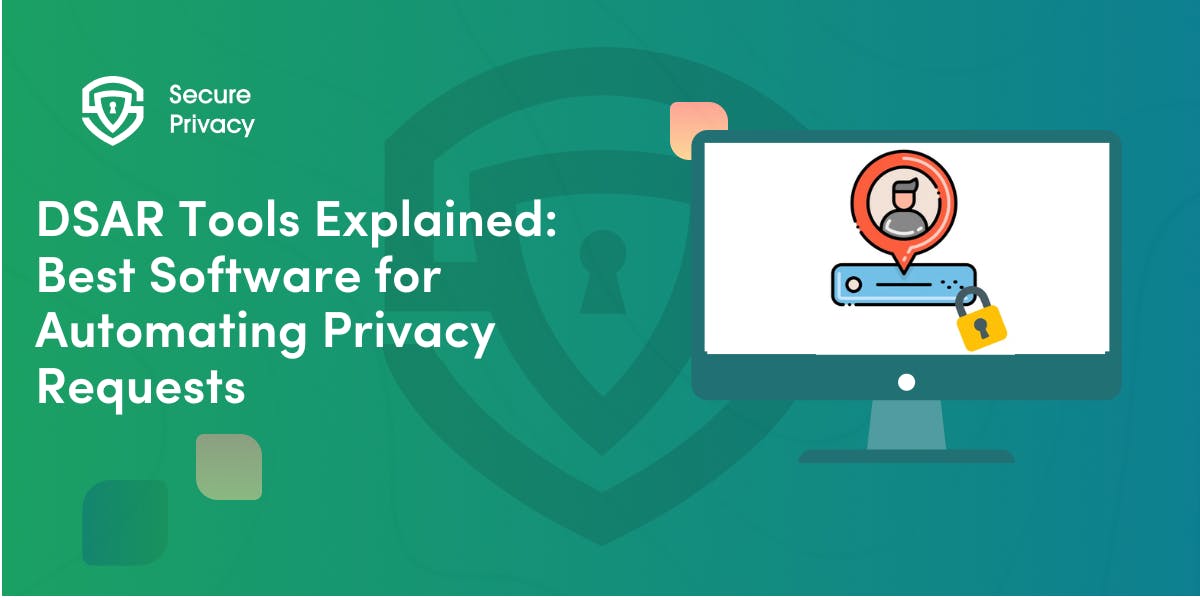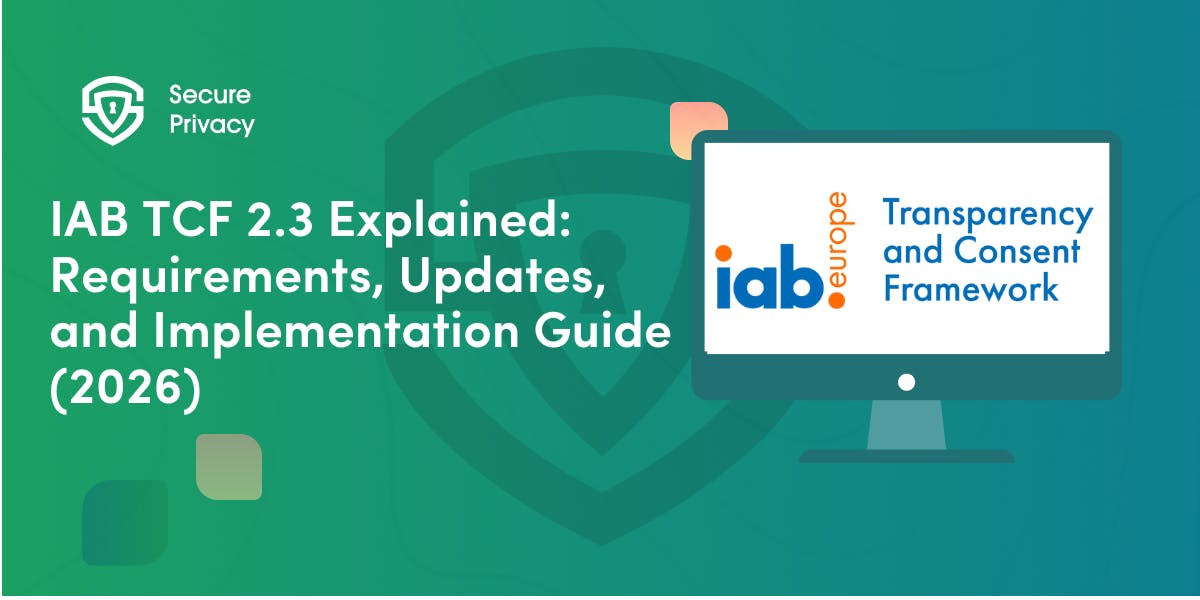Neurodata Consent Frameworks: Managing EEG/Brain-Computer Interface Data Under GDPR/CCPA
The rapid advancement of neurotechnologies—particularly electroencephalogram (EEG) devices and brain-computer interfaces (BCIs)—has created unprecedented challenges for data privacy compliance. By 2025, neural data is recognized as one of the most sensitive categories of personal information, with California's CCPA amendments and EU regulators imposing strict requirements for its collection, processing, and storage. This deep dive examines the legal, technical, and ethical frameworks governing neurodata consent in 2025.
Regulatory Scope
The regulatory environment for neural data continues is intricate, with several key frameworks establishing standards for its handling.
GDPR (EU/UK)
While GDPR does not explicitly mention neurodata, it is interpreted as falling under special categories of personal data (Article 9):
Biometric Data: EEG patterns are unique to individuals and are increasingly used for identification. Authentication systems leveraging these patterns have already achieved 40% accuracy, crossing the threshold for biometric recognition under GDPR.
Health Data: Neural signals revealing mental states qualify as health information, particularly when used for clinical applications like epilepsy detection or mental health monitoring.
Key GDPR requirements for neural data include:
Explicit Consent: Must be freely given, specific, and informed, which includes explaining risks of mental privacy breaches—a significant challenge given the complex nature of neural data.
Purpose Limitation: Data cannot be repurposed. For example, using EEG initially collected for seizure monitoring to later predict mood states would violate this principle without fresh consent.
Data Minimization: Organizations must collect only essential neural signals, potentially omitting raw EEG streams if derived metrics are sufficient for the stated purpose.
Right to Delete: Users can request erasure of neural data, including archived EEG recordings and derived insights.
Enhanced Security: GDPR increasingly mandates post-quantum encryption for neural datasets due to their long-term sensitivity.
The UK Information Commissioner's Office treats neurodata as health information under Article 9 UK GDPR, requiring ethical oversight for research BCIs and imposing additional safeguards for data transfers.
CCPA/CPRA (California)
California's SB 1223 (2024) explicitly classifies neural data as sensitive personal information, triggering enhanced protections:
Opt-In Consent: Required before any collection of neural data, making clear the privacy implications of technologies that monitor brainwaves.
The regulation establishes stringent requirements for transparency in processing practices, particularly when neural data might be used for behavioral prediction or personalization.
Global Developments
Beyond the EU and California, international standards are emerging:
UN Guidance has established that neurodata requires "precautionary principle" safeguards, including prohibitions on mental manipulation and involuntary collection.
Various national frameworks are adopting specific provisions for neural privacy, recognizing its exceptional sensitivity compared to other data categories.
Key Challenges in Neurodata Consent
The unique nature of neural data creates several distinct challenges for consent frameworks.
Informed Consent Complexity
Locked-In Patients: BCI users with limited communication capacity face significant challenges in understanding risks and expressing consent preferences, creating ethical and legal dilemmas for healthcare providers and technology developers.
Dynamic Data: Real-time EEG streams may reveal unintended information beyond their original purpose. For example, systems designed to track focus might incidentally detect depression markers, raising questions about disclosure and duty of care.
Vulnerable Populations: Pediatric EEG requires parental consent, but ethical best practices suggest obtaining children's assent for non-emergency cases, adding another layer of complexity to consent processes.
Technical Risks
Re-Identification: Research has demonstrated that even anonymized EEG patterns can be traced to individuals using machine learning techniques, challenging traditional anonymization approaches.
Quantum Vulnerabilities: Legacy encryption methods are increasingly recognized as insufficient for neural data stored long-term, as quantum computing advances threaten to compromise current security standards.
Ethical Dilemmas
Mental Privacy: Neural data could potentially expose thoughts, emotions, or unconscious biases, creating unprecedented privacy risks. For example, employer misuse of focus metrics collected from productivity headsets could lead to discrimination or privacy violations.
Autonomy: BCIs that alter brain activity through neurostimulation risk undermining user agency without robust consent frameworks, raising profound questions about cognitive liberty and mental autonomy.
Consent Framework Components
Addressing the unique challenges of neural data requires specialized consent frameworks that go beyond traditional approaches. Several key components have emerged as essential for compliant and ethical neurodata management.
Granular Consent Interfaces
Tiered Options provide users with fine-grained control over how their neural data is used. Rather than all-or-nothing consent, individuals can permit specific applications—for example, "Use EEG for seizure detection only, not mood analysis." This granularity respects the multifaceted nature of neural information.
Dynamic Controls enable real-time toggles in BCI applications to revoke consent during data collection. This immediate control is particularly important for neural technologies, where users may become uncomfortable with monitoring during a session and wish to withdraw consent without delay.
Technical Safeguards
Pseudonymization separates EEG signals from identifiable metadata at the point of ingestion. This architectural approach maintains utility while reducing privacy risks, particularly for research and development purposes where individual identification isn't necessary.
Quantum-Safe Encryption using lattice-based algorithms provides long-term protection for neural data storage. As quantum computing advances threaten traditional encryption methods, these forward-looking approaches ensure that today's neural data remains protected against future decryption attempts.
Data Lineage Tracking logs consent changes across systems, creating comprehensive audit trails that document the consent status of neural data throughout its lifecycle. This tracking is essential for demonstrating compliance with evolving regulatory requirements.
Transparency Measures
Explainable AI provides plain-language summaries of how neural data trains algorithms. For example, users might receive feedback such as: "Your EEG improved seizure prediction models by 12%." This transparency helps individuals understand the concrete impact of sharing their neural information.
Open-source consent management frameworks allow self-hosted solutions for neurotech startups, democratizing access to compliance tools. These frameworks provide standardized approaches to consent collection and management specifically designed for neural data applications.
Case Studies
Examining real-world implementations offers valuable insights into effective neurodata consent strategies.
Epilepsy Monitoring in the EU
Challenge: A German hospital's EEG telemetry system initially stored raw brainwaves indefinitely, creating significant privacy risks and potential GDPR violations.
Solution: The hospital implemented data minimization principles, retaining only essential spike-wave metrics instead of complete EEG recordings. They also deployed blockchain-based consent revocation that allowed patients to withdraw consent with immediate effect across all connected systems.
Outcome: This approach reduced storage costs by 60% while achieving GDPR compliance. Patients reported higher satisfaction with the transparent explanation of data usage, and the hospital avoided potential regulatory penalties.
Consumer Neurotech in California
Challenge: A meditation app using consumer EEG headbands faced CPRA lawsuits after it was discovered they were selling aggregated neural data to advertisers without explicit consent.
Solution: The company launched a comprehensive "Neural Data Dashboard" that allowed users to opt out of third-party sharing and delete historical data. They completely redesigned their consent framework to prioritize transparency and user control.
Outcome: While the company experienced a 30% revenue drop from advertising, they saw a surprising 45% increase in premium subscription uptake. Users appeared willing to pay for services that demonstrated respect for neural privacy, suggesting that ethical approaches can create new business opportunities.
Future Directions
The field of neurodata consent continues to evolve rapidly, with several important trends emerging.
Global Standards
ISO/IEC 24443 is an emerging standard specifically addressing neurodata encryption and consent record-keeping, with a draft expected in 2026. This framework aims to create international consistency in neural privacy protection.
Interoperable Consent Portability using W3C's Verifiable Credentials may soon allow users to transfer neural data preferences across jurisdictions and platforms. This approach would reduce consent fatigue while maintaining appropriate protections.
AI Governance
Bias Audits are increasingly required for BCIs used in high-stakes contexts such as hiring or education to prevent discrimination. The EU AI Act of 2025 establishes specific requirements for neural technologies that inform decisions about individuals.
Neuroethics Boards are becoming mandatory for organizations processing significant volumes of neural data. California's SB 1223 requires formal ethical oversight for companies processing more than 1TB of neural data annually.
Consumer Empowerment
Neural Data Cooperatives represent an emerging model where users collectively manage and potentially monetize their EEG/BCI data. Amsterdam's 2025 pilot program demonstrates how community governance can enhance both privacy protection and data value.
Actionable Recommendations
Organizations working with neural data should consider several key steps to ensure compliant and ethical practices:
Conduct Neurodata Mapping to inventory all EEG/BCI data flows and classify them under relevant regulations like GDPR and CCPA. This comprehensive understanding forms the foundation for appropriate consent frameworks.
Adopt Zero-Party Consent approaches that let users proactively define neural data permissions through preference centers. This shifts the paradigm from organization-led data collection to user-directed data sharing.
Partner with Ethicists to integrate neuroethics reviews into product development cycles. These specialized perspectives can identify potential issues before they become compliance problems or ethical controversies.
Building a Responsible Future for Neurodata
Neurodata consent frameworks must balance innovation with fundamental rights protection. As neural technologies continue to advance, organizations face both responsibility and opportunity in how they approach consent.
The stakes are particularly high given the potential penalties—up to €20 million under GDPR or $7,500 per violation under CPRA. Yet beyond compliance, organizations that develop thoughtful, transparent approaches to neurodata consent position themselves for sustainable growth in this emerging field.
The future of neurotechnology depends on earning and maintaining public trust. By implementing robust consent frameworks that respect both the letter and spirit of privacy regulations, organizations can contribute to a future where neural technologies enhance human capabilities while respecting mental privacy and autonomy.
These challenges represent not just compliance hurdles but an opportunity to establish ethical standards for some of the most intimate data humans can generate. The organizations that lead in developing responsible neurodata practices will help shape the future of this powerful technology.
Get Started For Free with the
#1 Cookie Consent Platform.
No credit card required

What is Cookie Consent? A Quick 2026-Ready Glance
Your website loads. Cookies track users. But without proper cookie consent, you're violating GDPR — risking fines up to €20 million or 4% of global revenue. Cookie consent is the legally required mechanism by which websites obtain explicit user approval before deploying non-essential tracking technologies. This requirement stems from GDPR Article 4(11) and the ePrivacy Directive, mandating that consent must be freely given, specific, informed, and unambiguous.
- Legal & News

DSAR Tools Explained: Best Software for Automating Privacy Requests
You're drowning in data subject access requests. Manual searches through dozens of systems miss regulatory deadlines and expose organizations to fines starting at $2,500 per violation. The solution? DSAR tools — purpose-built software that automates the entire process of responding to data subject access requests, from intake to delivery.
- Legal & News

IAB TCF 2.3 Explained: Requirements, Updates, and Implementation Guide (2026)
Your ad revenue dropped 40% overnight. Google stopped bidding on your inventory. Your DSP partners flagged your traffic as non-compliant. The culprit? An outdated TCF 2.2 consent string after the February 2026 enforcement deadline.
- Legal & News
- Cookie Consent

